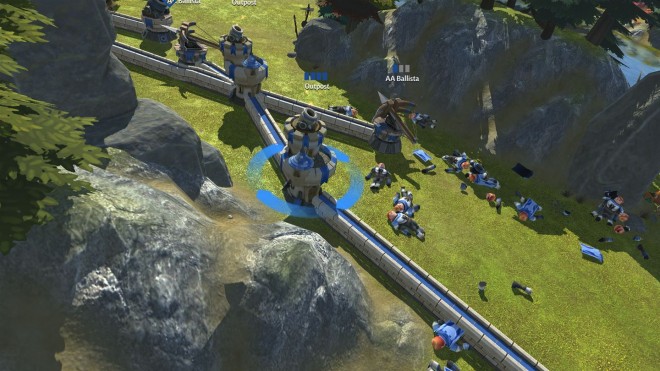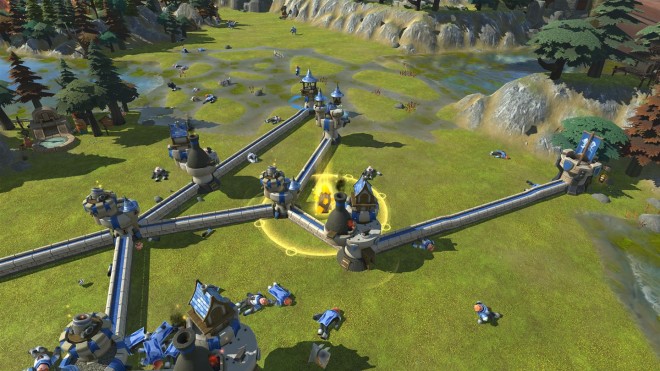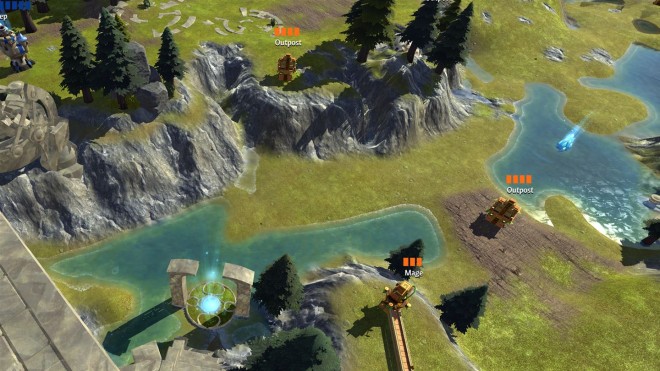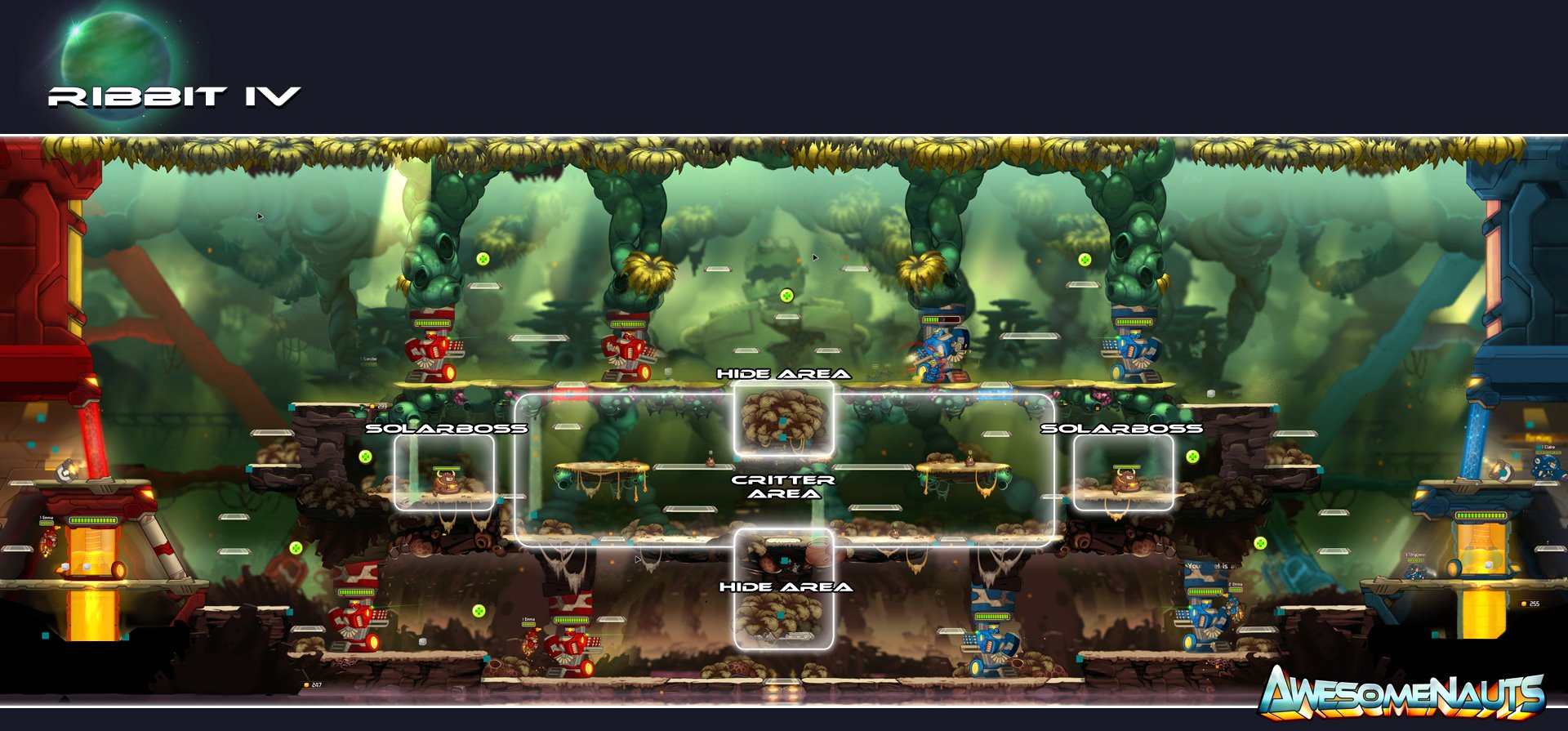The basic idea of Siegecraft Commander is sound enough; take elements of tower defense, real-time strategy and physics based combat and throw them together across a couple of lengthy solo campaigns and potentially endless multiplayer modes. Sounds great, doesn’t it? Well, sadly, it isn’t. There are peaks and troughs aplenty, as the initial high of attractive graphics and an enticing concept gives way to frustration and confusion. Get to grips with the horrendous controls and the frustrating use of physics, though, and things even out somewhat. However, Siegecraft Commander falls well short of expectations. The issues in Siegecraft Commander lie with the inbuilt desire to do things differently. I admire the ambition that the developers have shown in trying to cram so much in, but there is just too much to contend with.
Beginning with a single keep, players must “catapult” new outposts, armories, barracks and other buildings outwards using a physics-based approach that is best described as the same kind of drawstring approach as seen in games like Angry Birds. When a new building is launched (assuming it lands in a favorable location with no obstacles between it and the tower it was fired from) then a wall will be formed to link the two. In the event that any building that is earlier in the linked chain is destroyed, then the whole chain will collapse. Defending the entire, fragile structure with mortars, ballistae and foot soldiers from the barracks is essential. Once the campaign begins, the maps can range to impressively large, and the AI is both cunning and ferocious in its aim to drive the player back to whence he or she came.
Here’s what I liked:
Ferocious enemy AI – So many strategy games are let down by rubbish, unconvincing enemies, but Siegecraft Commander isn’t too bad on this front. Whilst the AI seems to be incapable of creating branches of buildings dynamically, it does launch a reasonably varied offensive against weak or unprotected towers in places that you might not expect. Airships, dragons and foot soldiers pose a constant threat should you allow them to remain unchecked, and I was surprised to see that I couldn’t simply block off areas of the map or create one or two no-fly zones to lock down the air.
Hey, good looking – Siegecraft Commander is a great looking game, with graphics that belie its relatively humble origins. Some of the bigger maps are vast, and the smooth, colorful engine suits the gameplay perfectly. There is no drop in frame rate even when panning or zooming. If I have a criticism about the way Siegecraft Commander looks, it would have to be that it can occasionally suffer from a lack of clarity. The buildings look very similar to each other (to the extent that each is labeled for what it is) and explosions don’t quite pop with the vibrancy that I might have expected.
Lots and lots to see and do – I’ve already mentioned that Siegecraft Commander has two core campaigns, but it’s worth noting that they are both fairly long and in the later stages: quite tough. Each campaign is based on a lightweight but moderately amusing story that explores (at a very high level) the concepts of good, evil, greed and what should really matter. Add these decent solo campaigns to a multiplayer mode (that equalizes both the strengths and weaknesses of the game by having two humans face off) and this is a game that packs in a ton of content, should you have got the hang of it.
Here’s what I didn’t like
Dismal controls – Like the unwelcome birthday present that kind of spoils your whole day, the controls in Siegecraft Commander are appalling. There are several modes to choose from when it comes to controlling the drawstring mechanic that I mentioned earlier, and all of them are crap. At best, you’ll find an option that you consider to be vaguely acceptable, but none of them are optimal. Once you’ve settled into one of them, you’ll still have to contend with the physics system. Almost all towers throw projectiles, but several of them fire them a different distance. The drawstring animation is the same for all buildings, and there is no other visual cue to indicate how far something will go. You simply have to remember. Combine this with the occasional laser guided accuracy of the AI, and you can be in for some frustrating times as I’ll describe below. The only saving grace is that the splash damage radius in Siegecraft Commander is generous, to say the least as if the developer realized that aiming weapons was caught somewhere between annoying and breathtakingly infuriating.
Tit-for-tat – The frustration that I mentioned above comes when you need to advance your outpost chain into the range of an equivalent enemy outpost. Each outpost can take two direct hits from a TNT barrel (the standard projectile) and whoever has the first outpost has the best chance of landing the first barrel. Sometimes the enemy accuracy leaves no opportunity for the player to win this race at all (which is annoying) but imagines it in a multiplayer matchup – time after time the same towers are built only to fall again. Of course, this leads to the need for the proficient use of combined arms, but it still seems like a less than fun mechanic.
Just another brick in the wall – Whilst the developer clearly felt that the drawstring mechanic was not innovative enough on its own, I’m not sure if including the need to chain buildings together was the right way to move the genre forwards. Some maps are tightly laid out, making planning where to stick the next structure a major pain in the butt, and whilst almost all maps expect the player to manage several branches of buildings, there is no way to “link” two branches back up to make them stronger. This is definitely intentional and plays a crucial part in how the game plays out (especially in multiplayer) but with so few automated weapons and such a fiddly targeting system, defending a large chain of buildings requires extreme dexterity and patience. Losing your whole chain because a sneaky opponent snuck up on your rear can create some real gamepad tossing moments.
Wrap-up:
I really wanted to like Siegecraft Commander more than I do, but having spent a long time with it over the past week, I still like it a lot more than I did after the first confusing five minutes. That is to say then, that Siegecraft Commander will grow on you, but how much, I can’t say. The controls and the rubbish drawstring aiming spoiled it for me, and with a better implementation of those things, I think I would have found less to fault about the building chain mechanic that could actually have been quite interesting. The game is made to an unusually high standard, with excellent campaigns and good potential for lasting multiplayer. Siegecraft Commander is the very epitome of a try before you buy kind of game, because whilst some people might love it, I personally feel that it is flawed enough to alienate a large majority.
Score: Limited Appeal
Siegecraft Commander was developed and published by Blowfish Studios on Xbox One. It released on January 17 2017 for $19.99. A copy was provided for review purposes.





